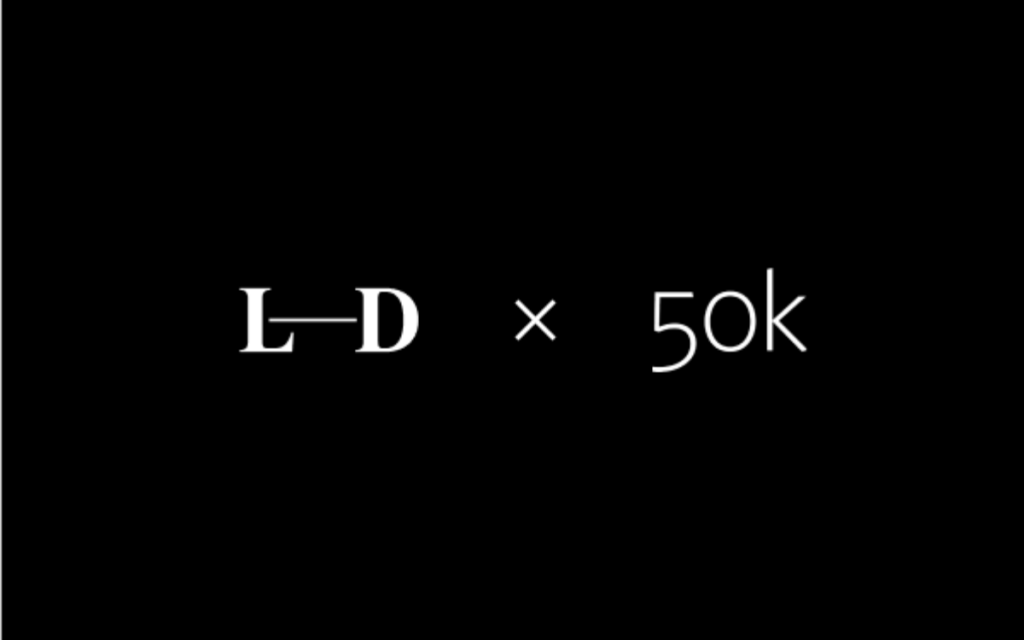Unlock Business Endurance Through Brand Architecture
“Getting it right” is the work of a lifetime—and also a worthwhile investment.
Karine Bailly is the VP of Brand Experience at Long Dash. She formerly led a team of brand and content strategists at the branding agency CHIEF.
I was recently asked how I might describe my job as a brand strategist.
“I’m a therapist for businesses,” I responded.
This is not intended to sound self-aggrandizing. (I’ve always respected the work of psychologists.) But it is my way of saying that my work is centered on helping businesses understand themselves better. How do they want to show up in the world? How can they stay true to this “core” amid a backdrop of increasing market complexity, audience demands, and socio-political strife? How can they stretch and grow with integrity and authenticity—even while growth goals loom overhead? None of these questions have easy answers, but beginning with a clear “sense of self” helps.
A brief analogy to that end, if you’ll permit me:
If brand equals “sense of self,” then brand architecture equals “personal growth path.” Think “What new challenges will you pursue and in what geographies? Who will you come across and what path will you ultimately travel?” instead of “What will the layout of your dream home look like?”
Said in less woowoo terms, the explicit organizational merits of brand architecture are important, but the implications of this system are far more imperative: architecture is about orienting the business toward long-term endurance.
This mindset shift may seem subtle or, perhaps, even obvious to some. In reality, it means brands must shift their approach to building these systems. Specifically, they must stop discussing brand architecture as a static output—for example, developing “house of brands” or “branded house” blueprints that live on paper. Brands must instead start addressing the complex and ever-evolving internal and external factors that influence architecture.
In particular, I suggest we approach these systems with a few key principles that can better ensure sustainability and scale.
Embrace “outside-in” thinking.
Audience-first thinking. User-centric design. Meeting your audiences where they are.
We’ve all heard these expressions ad nauseum in the last ten years. However commonplace they’ve become, these phrases are important reminders of the cry to design business strategies based on external audience needs—“outside-in thinking,” if you will. Yet, we continue to see an organizational tendency to over-index on “inside-out” thinking when wading into the waters of brand architecture. Specifically, audience needs are overshadowed by business goals like acquisitions, new markets, new products, strengthening departmental synergy, optimizing cost-cutting, or right-sizing efforts like getting ahead of a creeping competitor. These inside-out needs and goals are, of course, important but must be evaluated alongside audience-first thinking.
To design a system that’s built to last, businesses must take a step back to better evaluate whether or not their ambitions dovetail with the wishes and desires of their audiences. Primary research and a comprehensive brand audit are critical first steps. In so doing, it’s imperative that businesses linger on “outside-in” questions like:
- Will each brand actually serve different audiences? –and/or- Will this new brand serve our existing audience in different ways?
Of course these should come in equal measure with “inside-out” questions like:
- How can we best achieve X goals?
- How can we stay ahead of the vertical and horizontal competition?
- How can we best solve X problem?
Lifting up on before diving in can help you establish a clear, interconnected system where each component aligns with a specific audience need, and where other brands in the portfolio establish stronger complimentary audience value. This can be easier said than done, but making the investment upfront helps all other things fall into place.
New Coke, born of the Coca-Cola/Pepsi wars of the 80s, is a cautionary tale as to what happens when a business fails to design for audiences. The company’s leaders viewed New Coke’s sweeter formula as a way to recapture audiences who began to tip toward Pepsi. With all eyes on the potential of this shiny object, Coca-Cola’s business leaders failed to realize that New Coke not only gave Pepsi a run for its money: it also went head-to-head with Coca-Cola’s classic formula! The two formulas did not offer complementary value to Coca-Cola’s core audiences, nor new value for a new audience.
Sign up for OnBrand
Our weekly digest featuring ideas on the future of brand.
Evaluate institutional willpower.
Brand architecture is not confined to big ideas or static blueprints, as noted above. It must be executed and nurtured via the right resourcing, workflows, and budgets. Without clear commitment to the back-end structures that support front-end architecture, your nascent brands are left to flounder or fail—or they may end up actually cannibalizing the parent brand itself. They may also lead to soured sentiment among those teams lacking adequate support.
With this in mind, businesses must balance “outside-in” questions like:
- Should each brand pursue independent growth -or- should they operate in support of market share growth for the parent brand?”
… with “inside-out” questions like…
- Do the staffing and financial resources exist (or can they be carved out) to stand up execution and support long-term maintenance?
- Is there clear role delineation for the teams supporting these brands?
- Does the imminent or evolving brand portfolio reflect a business your staff wants to work for?”
Given the rising impact of employee sentiment on overall brand health, these kinds of questions are increasingly important. Today’s growth demands have cultivated the tendency for businesses to hop on the innovation and optimization bandwagon before properly evaluating institutional willpower. We see it play out across altitudes of risk-and-reward, from thought leadership platforms left unattended, to new products with big vertical or horizontal market promise, to DEI and social responsibility efforts. At best, your under-resourced team fails to convert reader loyalty into brand equity, which may also demoralize the team. At worst, you’ve massively disappointed consumers or shareholders—and the repercussions ripple from there.
Design with evolution in mind.
How many people live out their childhood dream of becoming astronauts, fire fighters, and lawyers? Some do, and that’s great. But the majority of people realize that it’s more fulfilling to play to their core strengths than to arbitrarily chase an idea—a predetermined profession or industry. Hence, their professional goals change over time.
Brands operate in a similar manner. Clarity and consistency are key, but in a world that never stands still, so too is flexibility. Designing for inevitable change requires business leaders to temper the urge to make a next-day splash without first considering the long-term strategy.
It requires “outside-in” questions like:
- What emerging trends might impact the business?
- How do market and sector shifts affect growth?
This of course also requires consideration of “inside-out” questions like:
- How does the business plan to grow and expand?
- What will be the key drivers of growth across the business or at the brand- and division-level?”
A flexible architectural system should enable a business to capitalize on these trends and innovations rather than boxing them into past successes.
Ironically, simplicity often supports stronger flexibility. We need only look as far as Apple to recognize this. The brand and its organizational structures have stayed true to the radical simplicity implemented in 1998, even while the business has become far more complex in the 40 years since.
Where do these best practices lead us? Likely to a reminder that there is no fixed, one-size-fits all solution. Just as any good psychologist will tell you: you don’t go to therapy to “get the answer.” That, friends, only comes from continuous self-reflection. Such is also true with a brand’s life path.





